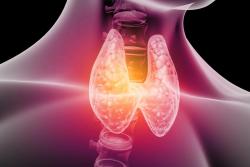Have your family or friends been afflicted by Alzheimer’s (AD), and do you worry about whether you, or another loved one, might be at risk? If so, we’re here to help.
Around 850,000 people in the UK live with cognitive decline (or ‘dementia’) and over 1 million may be affected by 2025 if we continue at the rate we’re going.[i]
AD is the overriding cause. The most prevalent subtypes are late-onset AD (LOAD), the most common form, which starts during older age (c. 65 years +), and early-onset AD which affects younger individuals (c. 30-65 years).
Key signs of cognitive decline[ii]:
- Minor memory problems which become more severe with time
- Confusion and getting lost in familiar places
- Difficulty with decision making, planning, speech, and language
- Personality changes e.g. becoming aggressive
- Hallucinations and delusions
- Low mood
You may have also heard about the role of genetics, especially the ‘APOE’ gene, causing you more worry about whether you carry the problematic variants (or ‘SNP’s’), which everyone is talking about.[iii] We hope that this blog reassures you that genetics, or APOE, are only one piece of a large, complex jigsaw behind why AD develops, and empowers you with the knowledge of how you can support yourself.
The APOE gene
AD develops when two types of protein, amyloid beta (Aβ) and tau, build up within the brain,[iv] causing abnormal structures to form called plaques and neurofibrillary tangles. These injure neural connections, triggering neurodegeneration and dementia.[v]
Apolipoprotein E (ApoE), coded by the APOE gene,[vi] supports the growth and repair of neurons by transporting the essential substrate – cholesterol - around the brain. It also helps regulate the metabolism of Aβ in the brain and lipids in the bloodstream.[vii],[viii] SNPs of the APOE gene are the main genetic risk factor for LOAD, especially the APOE ε4 allele.[ix] Those of us who carry this SNP seems to be more prone to AD related to a tendency towards poorer regulation of Aβ[x]and blood lipids, repair of neurons, and recovery from traumatic brain injury.[xi] These changes contribute to neurotoxicity, reduction in size of brain regions involved in memory (e.g. hippocampus),[xii] and deterioration of cardiovascular health,[xiii] all of which are recognised as driving forces of this disease. However, there are a wide range of other factors, which are well within our control, which can influence how significant this SNP actually becomes for our cognitive and all-round health.
Beyond Genetics
- Low levels of acetylcholine, a messenger molecule (or ‘neurotransmitter’) involved in memory, are associated with dementia.[xiv] This may result from not eating enough choline rich foods, such as egg yolks and offal, alongside existing damage to nerve cells which can worsened by neurotoxic levels of the stimulatory neurotransmitter called glutamate.[xv] This can arise if we are under sustained stress, don’t sleep very well, consume monosodium glutamate (MSG) from take-aways, and convert glutamate to the more calming neurotransmitter, GABA, too slowly. Poor glutamate to GABA conversion can be caused by low levels of vitamin B6,[xvi] and genetic polymorphism of the gene responsible for this called ‘GAD’.[xvii] Chronic stress also injures brain regions involved in memory via the release of cortisol[xviii] and drives inflammation, another risk factor for AD.[xix],[xx]Meanwhile, poor sleep allows Aβ to accumulate in the brain,[xxi] even after just one night of sleep deprivation![xxii]
- The brain can find it hard to self-repair (neuroplasticity) due to factors beyond just APOE. The main ones to know about are not consuming enough omega-3[xxiii] from oily fish and flaxseeds, and having a sedentary lifestyle. BDNF (brain-derived neurotrophic factor) is a messenger molecule which promotes the growth, development, and repair of neurons. Exercise is one of the best ways to boost the level of BDNF.[xxiv] So, a lack of exercise may contribute towards low circulating levels of BDNF, as observed in individuals with AD.[xxv],[xxvi]
- Neurotransmitters need to communicate with healthy cell membranes to properly convey the messages which they are carrying. If we consume too much omega-6 from grains and conventionally reared meat, too little foods rich in omega-3, and have a diet low in antioxidant- and phospholipid- rich foods like berries and offal, our cell membranes can become damaged and inflexible and less responsive to this signalling. Brain cells, and the energy powerhouses within our cells called mitochondria, are particularly prone to oxidative damage, so any driver of this, especially smoking, [xxvii],[xxviii] air pollution,[xxix] and high blood sugar,[xxx] may contributes towards neurodegeneration.[xxxi],[xxxii]
- Individuals with Type 2 Diabetes Mellitus generally have an increased risk of AD, whether or not they carry the APOEε4 allele,[xxxiii] leading researchers to describe it as ‘brain diabetes’ or even, ‘Type 3 Diabetes Mellitus’.[xxxiv] Blood sugar imbalance caused by a diet rich in carbohydrates (e.g. pasta, bread), regular snacking, and a sedentary lifestyle are therefore key risk factors. A lack of exercise also impairs neuroplasticity,[xxxv] and regular snacking keeps us in a constant fed state, which inhibits the process of autophagy, our brain’s way of cleaning itself and removing excess Aβ.[xxxvi]
- Homocysteine is a substance naturally produced in the body however, at higher amounts it can increase oxidative stress and accumulation of Aβ.[xxxvii] The biological process of methylation is needed to regulate it and also, produce enough of the neurotransmitter dopamine which is involved in memory too.[xxxviii] So, poor methylation driven by SNPs of key genes such as ‘MTHFR’,[xxxix] not consuming enough folate[xl] and B12[xli] from green leafy vegetables and grass-fed, organic meat, and being exposed to ‘drains’ on methylation such as alcohol,[xlii] may contribute to the complex picture of neurodegeneration.
- The role of neuroinflammation is generally becoming accepted too,[xliii] forcing us to recognise the potential role of any mediator of inflammation which we’re exposed to, ranging from processed food[xliv] to poor gut health[xlv],[xlvi] and latent infections.[xlvii]
- Being exposed to heavy metals, like aluminium from tap water[xlviii] and mercury from dental amalgams,[xlix] can also increase our risk,[l] especially if we have a reduced ability to detoxify them due to inadequate levels of glutathione, our body’s own antioxidant, related to dietary and genetic factors.[li]
So AD is caused by a conspiracy of different factors, combining together, to drive neurodegeneration and dementia. There’s not one single cause! While on one level this may still seem scary, it is actually empowering because it means that there is much that we can do to help ourselves.
How to support cognition
- Vitamin B5 and choline to support acetylcholine production.[lii],[liii] Choline is also needed to make phosphatidyl choline, a component of cell membranes.
- Vitamin B6 to encourage conversion of glutamate to GABA, and magnesium,[liv] taurine,[lv]chamomile,[lvi],[lvii] L-Theanine,[lviii],[lix] and lemon balm[lx],[lxi] to further increase the activity of GABA, to improve stress management and sleep.[lxii] Sleep may also support the clearance of Aβ from the brain,[lxiii] so optimising sleep is an essential goal. Consider complementary lifestyle techniques such as sleeping in a dark room and meditation.[lxiv]
- Omega-3 to support neuroplasticity, alongside daily exercise[lxv] to boost acetylcholine[lxvi] and BDNF levels, as well as cell membrane structure,[lxvii] mood,[lxviii] and inflammation.[lxix] Further support cell membranes and cognition with phosphatidyl serine,[lxx] good fats (coconut oil, avocado, fish), and dietary antioxidants (e.g. flavonoids,[lxxi]beta carotene,[lxxii]vitamin C and E[lxxiii]), and nutrients to support the body’s antioxidant enzymes (e.g. zinc[lxxiv]). Curcumin from turmeric may provide comprehensive neuroprotection by inhibiting both Aβ and inflammation.[lxxv]
- Minimise contact sports, which come with a risk of head trauma. Explore brain training techniques (e.g. learn a language or a new instrument).[lxxvi]
- Magnesium,[lxxvii]D-ribose,[lxxviii]N-acetyl carnitine,[lxxix],[lxxx] and vitamin B2 and B3[lxxxi] to support mitochondrial function and in turn, neuronal function.
- Botanicals, such as Ginkgo,[lxxxii] saffron,[lxxxiii]blackcurrant,[lxxxiv] and sage,[lxxxv] which may support cognition.
- Quit smoking, enjoy a homemade wholefood diet, explore safe removal of mercury amalgams, and drink filtered or glass bottled water.
- Chromium[lxxxvi] and alpha lipoic acid[lxxxvii],[lxxxviii] to support regulation of blood sugar, alongside daily exercise, avoidance of snacking, and a Paleo style way of eating.
- Explore time restricted feeding, or fasting, guided by a health professional, to support blood sugar balance and the brain’s ability to clean itself via autophagy.[lxxxix]
- Folate, B12, and B6 to support methylation and so, high homocysteine,[xc],[xci] as well as stress levels,[xcii] mood,[xciii] memory, detoxification,[xciv] and cell membrane structure,[xcv] alongside reduced exposure to ‘drains’ (e.g. alcohol).
- Support detoxification of heavy metals via methylation and glutathione conjugation with added reduced glutathione or N-acetyl cysteine.[xcvi],[xcvii]
- Probiotics to support the beneficial bacteria in the gut and the integrity of the gut wall, especially if you experience digestive issues such as food sensitivities and constipation.[xcviii]
Got a question?
The brand you can talk to:
We have a team of Nutritionists at the end of our advice line, open to you, for product support and advice (5 days a week). 0121 433 8702, clinicalnutrition@biocare.co.uk or live chat with us.
Or head to our advice page where you can find Healthnotes.
Not registered for an account with BioCare®?
You can register now to receive up to date news, product information and exclusive offers whether you are a consumer, practitioner or retailer.
References
[i] Dementia UK. Available at: https://www.alzheimers.org.uk/info/20025/policy_and_influencing/251/dementia_uk. Accessed: 24/04/2018.
[ii] NHS Alzheimer’s disease. Available at: https://www.nhs.uk/conditions/alzheimers-disease/ Accessed: 03/05/18
[iii] Chia-Chen L et al. Apolipoprotein E and Alzheimer disease: risk, mechanisms, and therapy. Nat Rev Neurol. 2013; 9 (2): 106-118.
[iv] Hashimoto et al. Role of protein aggregation in mitochondrial dysfunction and neurodegeneration in Alzheimer's and Parkinson's diseases. Neuromolecular Med. 2003;4(1–2): 21-36.
[v] Tomiyama T. [Involvement of beta-amyloid in the etiology of Alzheimer’s disease]. Brain Nerve. 2010; 62 (7): 691-9.
[vi] Chia-Chen L et al. Apolipoprotein E and Alzheimer disease: risk, mechanisms, and therapy. Nat Rev Neurol. 2013; 9 (2): 106-118.
[vii] Pfrieger FW. Cholesterol homeostasis and function in neurons of the central nervous system. Cell Mol Life. 2003; 60: 1158-1171.
[viii] Mahley RW, Rall, SC Jr. Apolipoprotein E: far more than a lipid transport protein. Annu Rev Genomics Hum Genet. 2000; 1: 507-37.
[ix] Farrer L et al. Effects of age, sex and ethnicity on the association between apolipoprotein E genotype and Alzheimer disease: a meta-analysis. JAMA. 1997; 278: 1349-1356.
[x] Polvikoski T et al. Apolipoprotein E, dementia, and cortical deposition of beta-amyloid protein. N Engl J Med. 1995; 333 (19): 1242-7.
[xi] Zhou W et al. Meta-analysis of APOE4 allele and outcome after traumatic brain injury. J Neurotrauma. 2008; 25 (4): 279-90.
[xii] Lupton MK et al. The effect of increased genetic risk for Alzheimer's disease on hippocampal and amygdalavolume. Neurobiol Aging. 2016 Apr;40:68-77.
[xiii] Lahoz C et al. Apolipoprotein E genotype and cardiovascular disease in the Framingham Heart Study. Atherosclerosis. 2001; 154 (3): 529-37.
[xiv] Vallés et al. Targeting brain α7 nicotinic acetylcholine receptors in Alzheimer’s Disease: rationale and current status. CNS Drugs. 2014 Sep;28:975-987.
[xv] Chen et al. Open-channel block of N-methyl-D-aspartate (NMDA) responses by memantine: therapeutic advantage against NMDA receptor-mediated neurotoxicity. J Neuroscience. 1992 Nov; 12(11):4427-4436.
[xvi] Battaglioli G et al. Kinetic differences between the isoforms of glutamate decarboxylase: implications for the regulation of GABA synthesis. Journal of Neurochemistry. 2003; 86 (4): 879-887.
[xvii] Modi JP et al. Regulation of GABA neurotransmission by glutamic acid decarboxylase (GAD). Curr Pharm Des. 2015; 21(34):4939-4942.
[xviii] Kim EJ et al. Stress effects on the hippocampus: a critical review. Learn Mem. 2015; 22 (9): 411-416.
[xix] Morris et al. Sleep Quality and Duration are Associated with Higher Levels of Inflammatory Biomarkers: the META-Health Study. Circulation. 2010; 122: A17806.
[xx] Wyss-Coray, Rogers J. Inflammation in Alzheimer Disease – A Brief Review of the Basic Science and Clinical Literature. Cold Spring Harb Perspect Med. 2012; 2 (1): a006346.
[xxi] Ju Y-E et al. Slow wave sleep disruption increases cerebrospinal fluid amyloid-β levels. 2017; 140 (8): 2104-2111.
[xxii] Shokri-Kojori E et al. β-amyloid accumulation in the human brain after one night of sleep deprivation. PNAS. 2018; 115 (17): 4483-4488.
[xxiii] Michael-Titus AT, Priestley JV. Omega-3 fatty acids and traumatic neurological injury: from neuroprotection to neuroplasticity? Trends in Neurosciences. 2014; 37 (1): 30-38.
[xxiv] Hötting K, Röder B. Beneficial effects of physical exercise on neuroplasticity and cognition. Neuroscie Biobehav Rev. 2013; 37 (9 Pt B): 2243-57.
[xxv] Diniz BS, Teixeira AL. Brain-derived neurotrophic factor and Alzheimer’s disease: physiopathology and beyond. Neuromolecular Med. 2011; 13 (4): 217-22.
[xxvi] Pláteník J et al. GSK3β, CREB, and BDNF in peripheral blood of patients with Alzheimer’s disease and depression. Prog Neuropsychopharmacol Biol Psychiatry. 2014; 50: 83-93.
[xxvii] Cataldo JK. Cigarette smoking is a risk factor for Alzheimer’s disease: an analysis controlling for tobacco industry affiliation. J Alzheimers Dis. 2010; 19 (2): 465-480.
[xxviii] Isik B et al. Oxidative stress in smokers and non-smokers. Inhal Toxicol. 2007; 19 (9): 767-9.
[xxix] Maher BA et al. Magnetite pollution nanoparticles in the human brain. PNAS. 2016; 113 (39): 10797-10801.
[xxx] Moreira, P. An integrative view of the role of oxidative stress, mitochondria and insulin in Alzheimer's disease. J Alzheimer’s disease. 2009; 16(4):741-763.
[xxxi] Liu Z et al. Oxidative stress in neurodegenerative diseases: from molecular mechanisms to clinical applications. Oxidative Medicine and Cellular Longevity. 2017; 2017: 2525967.
[xxxii] Moreira PI et al. Mitochondrial dysfunction is a trigger of Alzheimer’s disease pathophysiology. Biochimica et Biophysica Acta – Molecular Basis of Disease. 2010; 1802 (1): 2-10.
[xxxiii] Peila R et al. Type 2 Diabetes, APOE gene, and the risk for dementia and related pathologies: the Honolulu-Asia Aging Study. Diabetes. 2002; 51 (4): 1256-62.
[xxxiv] Leszek J et al. Type 3 Diabetes Mellitus: a novel implication of Alzheimer’s Disease. Curr Top Med Chem. 2017; 17 (12): 1331-1335.
[xxxv] Sleiman SF et al. Exercise promotes the expression of brain derived neurotrophic factor (BDNF) through the action of the ketone body β-hydroxybutyrate. eLife. 2016; 5: e15092.
[xxxvi] Zare-shahabadi A et al. Autophagy in Alzheimer’s Disease. Rev Neurosci. 2015; 26 (4): 385-395.
[xxxvii] Zhuo J-M et al. Is hyperhomocysteinemia an Alzheimer’s disease (AD) risk factor, an AD marker, or neither? Trends Pharmacol Sci. 2011; 32 (9): 562-571.
[xxxviii] Simpson EH et al. Genetic variation in COMT activity impacts learning and dopamine release capacity in the striatum. Learn Mem. 2014;21(4):205–214.
[xxxix] Yamada K et al. Effects of common polymorphisms on the properties of recombinant human methylenetetrahydrofolate reductase. PNAS. 2001;98(26):14853–14858.
[xl] Fox JT, Stover PJ. Folate-mediated one-carbon metabolism. Vitam Horm. 2008;79:1-44.
[xli] Romine MF et al. Elucidation of roles for vitamin B12 in regulation of folate, ubiquinone, and methionine metabolism. Proceedings of the National Academy of Sciences of the United States of America. 2017;114(7):E1205-E1214.
[xlii] Waly MI et al. Ethanol lowers glutathione in rat liver and brain and inhibits methionine synthase in a cobalamin-dependent manner. Alcohol Clin Exp Res. 2011;35(2):277-83.
[xliii] Heppner et al. Immune attack: the role of inflammation in Alzheimer disease. Nature Reviews Neuroscience. 2015 Jun;16:358-372.
[xliv] Uribarri J et al. Diet-derived advanced glycation end products are major contributors to the body’s AGE pool and induce inflammation in healthy subjects. Ann N Y Acad Sci. 2005; 1043: 461-6
[xlv] Belkaid Y, Hand TW. Role of the microbiota in immunity and inflammation. Cell. 2014; 157 (1): 121-41.
[xlvi] Hietbrink F et al. Systemic inflammation increases intestinal permeability during experimental human endotoxemia. Shock.2009; 32 (4): 374-8
[xlvii] Massanella M et al. Residual inflammation and viral reservoirs: alliance against HIV cure. Curr Opin HIV AIDS. 2016; 11 (2): 234-241.
[xlviii] Martyn et al. Geographical relation between Alzheimer’s disease and aluminium in drinking water. Lancet. 1989 Jan;333(8629):61-62.
[xlix] un YH, et al. Association between dental amalgam fillings and Alzheimer's disease: a population-based cross-sectional study in Taiwan. Alzheimers Res Ther. 2015 Nov 12;7(1):65.
[l] Wang Z, et al. Chronic exposure to aluminum and risk of Alzheimer's disease: A meta-analysis. Neurosci Lett. 2016 Jan 1;610:200-6.)
[li] Sears ME. Chelation: harnessing and enhancing heavy metal detoxification – a review. The Scientific World Journal. 2013; 2013: 219840.
[lii] Rivera-Calimlim L Effects of ethanol and pantothenic acid on brain acetylcholine synthesis.Br J Pharmacol.1988 Sep;95(1):77-82.
[liii] McCann JC et al. An overview of evidence for a causal relationship between dietary availability of choline during development and cognitive function in offspring. Neurosci Biobehav Rev 2006;30(5):696-712.
[liv] Abbasi et al. The effect of magnesium supplementation on primary insomnia in elderly: A double-blind placebo-controlled clinical trial. J Res Med Sci. 2012 Dec; 17 (12): 1161-9
[lv] Jia et al. Taurine is a potent activator of extrasynaptic GABAA receptors in the thalamus. Journal of Neuroscience. 2008; 28 (1): 106-15.
[lvi] Awad et al. Effects of traditionally used anxiolytic botanicals on enzymes of the gamma-aminobutyric acid (GABA) system. Can J Physiol Pharmacol. 2007 Sep; 85 (9): 933-42
[lvii] Amsterdam JD, Li Y, Soeller I, Rockwell K, Mao JJ, Shults J. A randomized, double-blind, placebo-controlled trial of oral Matricaria recutita (chamomile) extract therapy for generalized anxiety disorder. J Clin Psychopharmacol. 2009 Aug;29(4):378-82.
[lviii] Kakuda T et al. Inhibition of theanine of binding of [3H]AMPA, [3H]Kainate, and [3H]MDL 105, 519 to Glutamate receptors. Biosci. Biotechnol. Biochem. 2002; 66 (12): 2683-2686.
[lix] White DJ et al. Anti-stress, behavioural and magnetoencephalography effects of an L-theanine-based nutrient drink: a randomised, double-blind, placebo-controlled, crossover trial. Nutrients. 2016; 8 (1): E53
[lx] Cases J et al. Pilot trial of Melissa officials L leaf in the treatment of volunteers suffering from mild to moderate anxiety disorders and sleep disturbances. Med j Nutrition Metab 2011;4(3):211-218.
[lxi] Awad R, Muhammad A, Durst T, Trudeau VL,Arnason JT. Bioassay-guided fractionation of lemon balm (Melissa officinalis L) using anin vitromeasure of GABA transaminase activity. Phytotherapy Research 2009; 23(8): 1075–8.
[lxii] Lim AS et al. Increased fragmentation of rest-activity patterns is associated with a characteristic pattern of cognitive impairment in older individuals. Sleep. 2012; 35 (5): 633-40B.
[lxiii] Xie L et al. Sleep drives metabolite clearance from the adult brain. Science. 2013; 342 (6156).
[lxiv] Khalsa, D.S. Stress, mediation, and Alzheimer’s disease prevention: where the evidence stands. J Alzheimers Disease. 2015;48:1-12.
[lxv] Buchman AS et al. Total daily physical activity and the risk of AD and cognitive decline in older adults. Neurology. 2012; 78 (17): 1323-1329.
[lxvi] Conlay LA et al. Exercise and neuromodulators: choline and acetylcholine in marathon runners. Int J Sports Med. 1992; 13 Suppl 1: S141-2.
[lxvii] Valentine RC, Valentine DL. Omega-3 fatty acids in cellular membranes: a unified concept. Prog Lipid Res. 2004; 43 (5): 383-402.
[lxviii] Colangelo LA, et al. Higher dietary intake of long-chain omega-3 polyunsaturated fatty acids is inversely associated with depressive symptoms in women. Nutrition. 2009 Oct;25(10):1011-9.
[lxix] Simopoulos AP Omega-3 fatty acids in inflammation and autoimmune diseases. J Am Coll Nutr 2002; 21:495–505.
[lxx] Zhang, Y.Y., Yang, L.Q., Guo, L.M., Effect of phosphatidyl serine on memory in patients and rats with Alzheimer’s disease. Genet. Mol. Res. 2015; 14 (3): 9325-33
[lxxi] Spencer JPE. Flavonoids: modulators of brain function? Br J Nutr. 2008;99
[lxxii] Stuerenburg HJ et al. Plasma beta carotene in alzheimer's disease. association with cerebrospinal fluid beta-amyloid 1-40, (Abeta40), beta-amyloid 1-42 (Abeta42) and total tau. Neuro Endocrinol Lett. 2005 Dec;26(6):696-8.
[lxxiii] Morris et al. Vitamin E and vitamin C supplement use and risk incident Alzheimer disease, Alzheimer Dis and Assoc Disorders 1998, 12: 121-6
[lxxiv] Brewer GJ et al. Subclinical zinc deficiency in alzheimer's disease and parkinson's disease. Am J Alzheimers Dis Other Demen. 2010 Nov;25(7):572-5.
[lxxv] Lim GP et al The Curry Spice Curcumin Reduces Oxidative Damage and Amyloid Pathology in an Alzheimer Transgenic Mouse The Journal of Neuroscience, 1 November 2001, 21(21): 8370-8377;
[lxxvi] Spector A et al. Cognitive stimulation for the treatment of Alzheimer’s disease. Expert Rev Neurother. 2008; 8 (5): 751-7.
[lxxvii] Abraham GE, Flechas JD. Management of fibromyalgia: Rationale for the use of magnesium and malic acid.J Nutr Med. 1992, 3: 49-59.
[lxxviii] Teitelbaum JE, Johnson C, St Cyr J. The use of D-ribose in chronic fatigue syndrome and fibromyalgia: A pilot study. J Altern Complement Med. 2006 Nov;12(9):857-62.
[lxxix] Liu J, et al. Memory loss in old rats is associated with brain mitochondrial decay and RNA/DNA oxidation: partial reversal by feeding acetyl-L-carnitine and/ or R-alpha-lipoic acid. Proc Natl Acad Sci 2002;99:2356-61
[lxxx] Reuter SE, Evans AM. Long-chain acylcarnitine deficiency in patients with chronic fatigue syndrome. Potential involvement of altered carnitine palmitoyltransferase-I activity. J Intern Med. 2010 Dec 22.
[lxxxi] Depeint F et al.Mitochondrial function and toxicity: Role of the B vitamin family on mitochondrial energy metabolism.Chemico-Biological Interactions 2006; 163(1-2):27.
[lxxxii] Birks J. Ginkgo biloba for cognitive impairment and dementia. Cochrane Database Syst Rev. 2002; (4)
[lxxxiii] Asadi F et al. Reversal effects of crocin on amyloid β-induced memory deficit: modification of autophagy or apoptosis markers. Pharmacol Biochem Behav. 2015; 139 (Pt A): 47-58.
[lxxxiv] Watson. Acute supplementation with blackcurrant extracts modulates cognitive functioning and inhibits monoamine oxidase-B in healthy young adults. Journal of Functional Foods. Volume 17, August 2015, Pages 524-539
[lxxxv] Scholey AB,et al. An extract of Salvia (sage) with anticholinesterase properties improves memory and attention in healthy older volunteers. Psychopharmacology (Berl). 2008 May;198(1):127-39.
[lxxxvi] Martin et al.Chromium picolinate supplementation attenuates body weight gain and increases insulin sensitivity in subjects with type 2 diabetes. Diabetes Care. 2006 Aug; 29(8): 1826-32.
[lxxxvii] Jacob S, Henriksen EJ, Schiemann AL, et al. Enhancement of glucose disposal in patients with type 2 diabetes by alpha-lipoic acid. Arzneim-Rorsch Drug Res 1995;45(2):872-74.
[lxxxviii] Hager K1, Arch Gerontol Geriatr. Et al. Alpha-lipoic acid as a new treatment option for Alzheimer [corrected] type dementia.2001 Jun;32(3):275-82.
[lxxxix] Alirezaei M et al. Short-term fasting induces profound neuronal autophagy. Autophagy. 2010; 16 (6): 702-710
[xc] van der Griend R, Haas FJ, Biesma DH, et al. Combination of low-dose folic acid and pyridoxine for treatment of hyperhomocysteinaemia in patients with premature arterial disease and their relatives. Atherosclerosis 1999;143:177-83.
[xci] Smith ADvet al. Homocysteine-lowering by B vitamins slows the rate of accelerated brain atrophy in mild cognitive impairment: A randomized controlled trial. PLoS One. 2010 Sep 8;5(9):e12244.
[xcii] Hettema JM et al. COMT contributes to genetic susceptibility shared among anxiety spectrum phenotypes. Biol Psychiatry. 2008;64(4)1:302–310.
[xciii] Gandolfo G et al. Association of the COMT synonymous polymorphism Leu136Leu and missense variant Vak158Met with mood disorders. J Affect Disord. 2015; 177:108-113.
[xciv] Thomas M.P, Potter B. The structural biology of oestrogen metabolism. J of Steroid Biochem Mol Biol. 2013; 137: 27-49.
[xcv] Moessinger C et al. Two different pathways of phosphatidylcholine synthesis, the Kennedy Pathway and the Lands Cycle, differentially regulate cellular triacylglycerol storage. BMC Cell Biology.2014;15:43.
[xcvi] Ballatori N, Lieberman MW, Wang W N-acetylcysteine as an antidote in methylmercury poisoning. Environ Health Perspect 1998 May;106(5):267-71.





